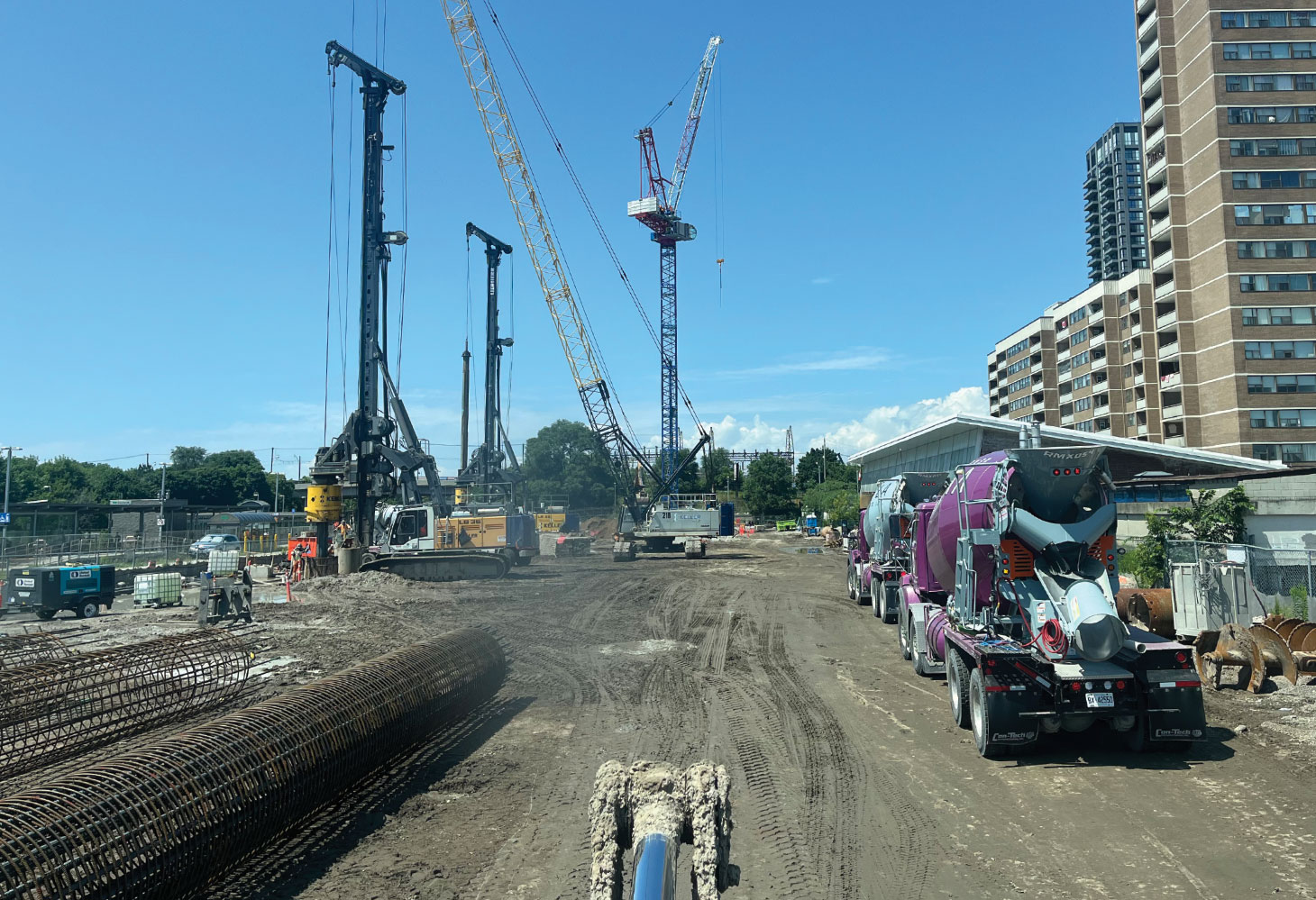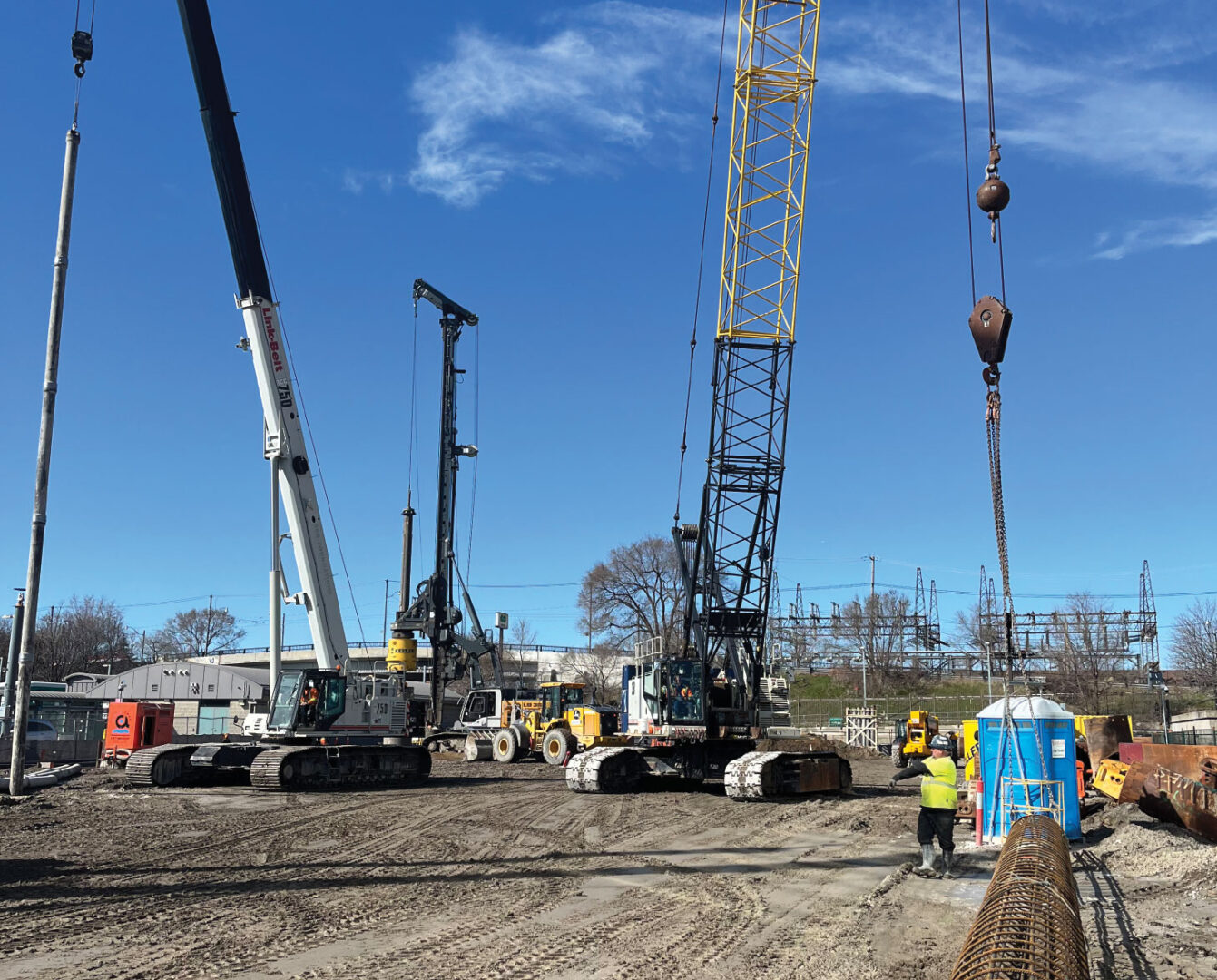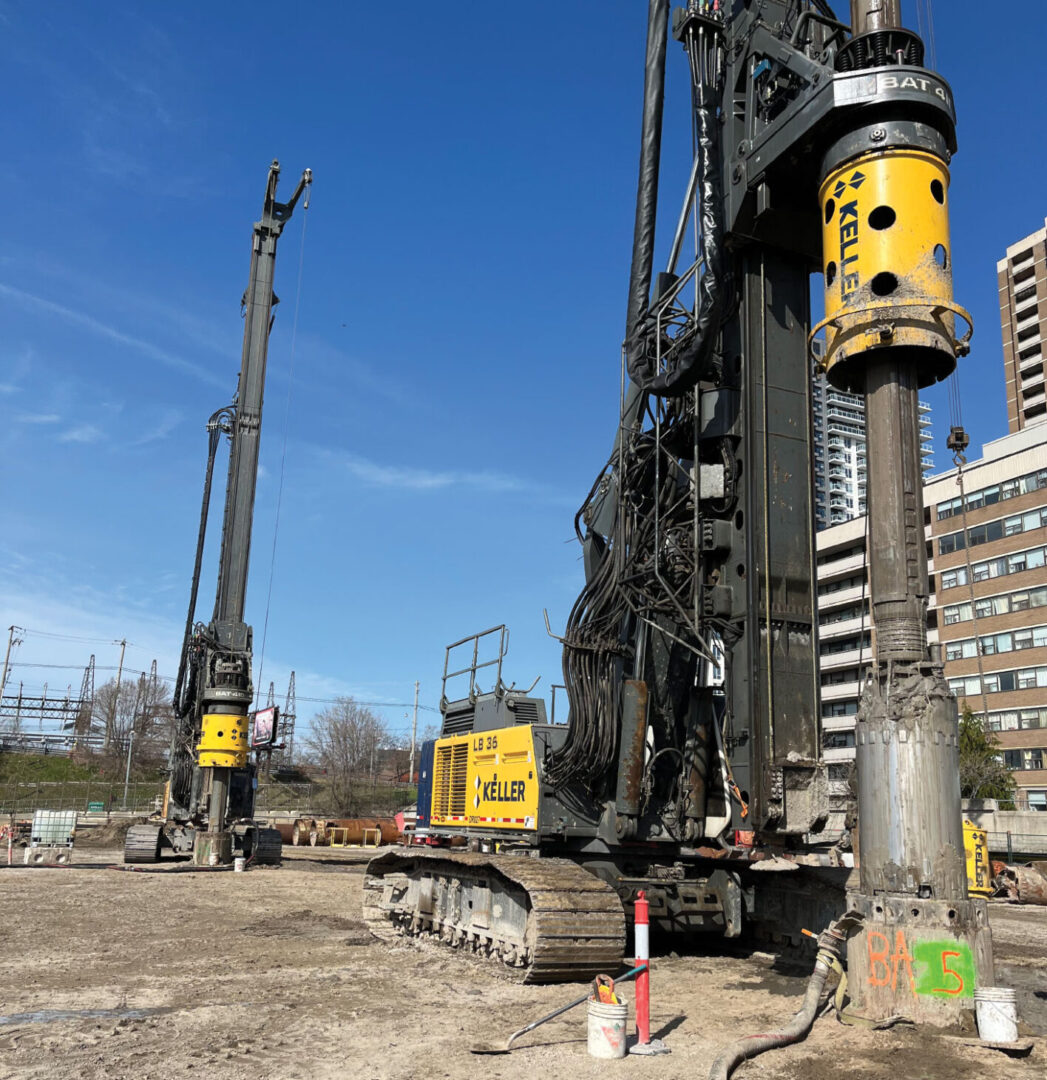
When work on Rushden Station in Toronto’s popular Danforth Village wraps up in early 2027, most onlookers will be inclined to cast their eyes upwards as they pass by the towering multi-structure rental housing development.
That’s understandable considering developer Fitzrovia’s three apartment towers will range in height between 29 and 39 storeys and provide 923 new rental units as part of one of the largest rental housing projects currently under construction in Canada. Sadly, those same passersby won’t be able to glimpse beneath the ground of the massive structures, which will be located at 6 Dawes Rd. near the intersection of Danforth Avenue and Main Street. If they could, they would likely be fascinated by what they saw.
Keller North America and its Acton, Ont., office partnered with KB International to install the foundations the apartment towers and their associated commercial spaces will rest on. The foundations were installed using a unique method that was first pioneered by KB International more than 30 years ago. Instead of using traditional steel casing to depth, it uses a polymer slurry known as SlurryPRO CDP, which has been designed to work in a variety of difficult soil and water conditions.

The process is relatively simple. After a surface casing is set and cleaned out, the excavation is filled with polymer maintaining positive differential head pressure two to three metres above ground water. As material is removed and drilling progresses, more polymer is pumped into the shaft to take the place of the drilled solids and to maintain hydrostatic head.
Bill Li, pre-construction manager for Keller North America, says his company collaborated with KB International on several previous projects and it made sense to do so again on 6 Dawes because of the challenging soil conditions on the site.
Normally, the company would have used casings and drilled them down into the ground to maintain hole stability. Li says his company decided to use the polymer slurry method instead because of variable soil conditions (a mix of sand, salt and gravel), the presence of groundwater 10 metres below the surface and extreme drill depth at more than 50 metres. This would have made conventional cased drilling prohibitive.
“With the polymer slurry, instead of pushing these full-length casings, we only had to set up a top liner for safety. Then, we drilled the rest [of the way] with polymer slurry, which acts as a pressure barrier to push out again the soil and water and hold these holes open.”
Bill Li, Keller North America
“Pushing those casings … all the way down into the ground with a drill rig takes a lot of power. It also takes a lot of time because not only do you have to push these casings down, but you also have to pull them back up. It exerts a lot of energy [from] the machine and … it’s not usually the most efficient way of drilling these deep, deep caissons,” he said. “That’s where KB’s system comes in. With the polymer slurry, instead of pushing these full-length casings, we only had to set up a top liner for safety. Then, we drilled the rest [of the way] with polymer slurry, which acts as a pressure barrier to push out again the soil and water and hold these holes open.”
Li says the biggest challenge his company had to deal with during the project was the variable soil conditions, especially abrasive sand in the soil. He estimates the project could have taken twice as long had his company used regular cased piles rather than KB International’s polymer slurry technology.
“The variability of the soil conditions requires custom built tooling to go through all these materials in an optimal fashion,” he said. “Drilling techniques must be adapted to accommodate for variable ground conditions to optimize production. Patience is key.”
The other major challenge Keller and KB International had to contend with was a high groundwater table at 10 metres below ground surface. Mark Walters, KB International’s market manager, says the beauty of his company’s system is that it was designed specifically to deal with extreme subsurface moisture.

“The key thing here is with soils that are saturated or moist, you want to prevent them from taking on more fluid. Once they hit that saturation point, that’s when they can start to mobilize,” he said. “Our system does a nice job of really complexing the water so that it’s not absorbed into the soils which prevents them from mobilizing. It also forms a thin layer on the sidewalls (of the shaft) further preventing fluid loss and adding to the sidewall strength.”
Keller and KB International worked closely together from the pre-design stage through to drilling. In addition, the latter had company representatives on site during construction to provide Keller’s field personnel with training on mixing and testing procedures to ensure the polymer system functioned properly. Li and Walters say there were plenty of back-and-forth discussions between the two companies about how the process could be tweaked on the jobsite to ensure work was completed in the most efficient and timely manner possible.
“I think the key word there is collaboration,” Walters said. “We have a lot of preferred ways we like to do things, but we also recognize that a lot of the different clients that we have around the world have their own processes. We do our best to work within those boundaries as long as we’re not compromising the polymer’s performance.”
Li says one of the key takeaways for his company involvement from the 6 Dawes project was the value of working closely with KB International to leverage its expertise on designing an optimal slurry mix. That included up-to-the-minute discussions on site regarding the addition of products “made the process much smoother.”
Walters expects that the use of polymer slurry technology is only going to continue to grow, especially in a market like Toronto where there is an urgent demand for additional condo and rental housing. He also anticipates it will be incorporated into more and more infrastructure projects as well.